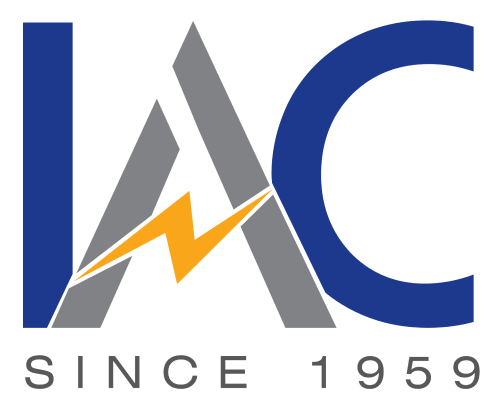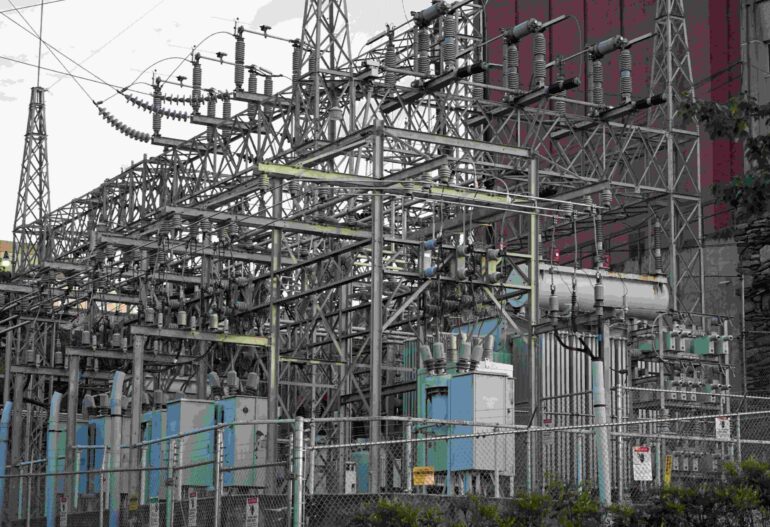Electricity spans across vast areas, connecting towns, cities, and even remote areas like mountains, deserts, and offshore areas. This expansive reach is made feasible by a network consisting of distribution grids, power lines, and transformer substations.
Referred to as power transmission lines or high-voltage lines, these channels convey electricity from power plants or generator parks to a grid responsible for regional power distribution. This is where electrical substations become integral components of this process.
What is Substation or an Electrical Substation?
Usually situated around consumption zones, either indoors or outdoors to conserve space. Additionally, substations are also found near power plants.
The key disparity lies in the scale of the setups. Transformer stations connect with high/medium-voltage transmission systems, whereas electrical substations are configured to handle and convert lower voltage levels.
The Function of Electrical Substation
Electricity stations are like super helpers for power. They make electricity, change it, and send it to different places. That’s how our homes get power to run our gadgets safely.
Different types of these stations make sure the power is just right for us to use. They make it strong and change it so it works well for all our devices.
Parts of the Electrical Substation
An electrical substation is a high-voltage electrical station that contains many different sub station hardware fittings that work together to safely and efficiently distribute electricity. Some of the key components of an electrical substation include:
1.Power transformers
These are used to change the voltage of electricity from one level to another. For example, a power transformer can be used to step up the voltage of electricity from 11,000 volts to 138,000 volts or to step down the voltage of electricity from 138,000 volts to 11,000 volts.
2. Circuit breakers
These are used to protect electrical circuits from damage by automatically opening the circuit if the current exceeds a safe level. Circuit breakers are also used to isolate faults in electrical circuits.
3.Current transformers
These are used to measure the current flowing in an electrical circuit. The current transformer steps down the current to a safe level that can be measured by a meter.
4.Potential transformers
These are used to measure the voltage in an electrical circuit. The potential transformer steps down the voltage to a safe level that can be measured by a meter.
5.Isolators
These are used to isolate electrical circuits for maintenance or safety purposes. Isolators are also used to prevent the flow of current between different parts of an electrical system.
6.Busbars
These are thick copper bars that are used to carry electricity from one part of an electrical substation to another. Busbars are insulated to prevent the flow of current to the ground.
7.Lightning arresters
These are used to protect electrical equipment from damage caused by lightning strikes. Lightning arresters divert the energy of lightning to the ground.
8.Control panels
These are used to control and monitor the operation of an electrical substation. Control panels contain switches, meters, and indicators that allow operators to control the flow of electricity and monitor the status of the substation equipment.
These are just some of the many components that can be found in an electrical substation. The specific components that are included in a substation will vary depending on the size and purpose of the substation.
Types of Electrical Substation
Electrical substations come in various types, each serving specific functions within the power grid. Here are some common types:
- Step-up Substation: These substations increase the voltage of electricity generated at power plants for efficient long-distance transmission over high-voltage lines.
- Step-down Substation: Opposite to step-up substations, they reduce high-voltage electricity to lower levels before distributing it to local areas, industries, or homes.
- Distribution Substation: They receive electricity from transmission lines at higher voltages and lower it further for local distribution. They supply power to neighborhoods or smaller regions.
- Switching Substation: These substations enable switching operations, allowing for the rerouting of power during maintenance or in case of faults, ensuring a continuous power supply.
- Converter Substation: Specifically designed for converting alternating current (AC) to direct current (DC) or vice versa. They’re essential for systems involving different types of current.
- Mobile Substation: These substations are portable and can be quickly installed in case of emergencies or to provide temporary power during repairs or construction work.
- Collector Substation: Typically used in renewable energy setups like wind or solar farms, they gather power from multiple sources and send it to a central point for transmission.
- Indoor and Outdoor Substations: These describe the physical location of the substation. Indoor substations are enclosed within buildings, while outdoor substations are exposed and built-in open spaces.
These different types of substations play crucial roles in the efficient generation, transmission, and distribution of electricity within power systems.
Final Words
Electrical substations are the backbone of power distribution, facilitating safe and efficient electricity flow. Their diverse types cater to transmission, transformation, and local distribution needs.
These vital hubs ensure reliable energy access, empowering modern societies while constantly evolving with advanced technologies for a robust energy future. On this note, IAC Electricals manufacturer and installer of substation equipment, clamps and connectors, and other electrical transmission accessories.
We aim to be the top choice for making transmission line hardware fittings in India and beyond. Our goal is to offer top-notch service without any compromises and serve everyone with the best expertise in the field.






